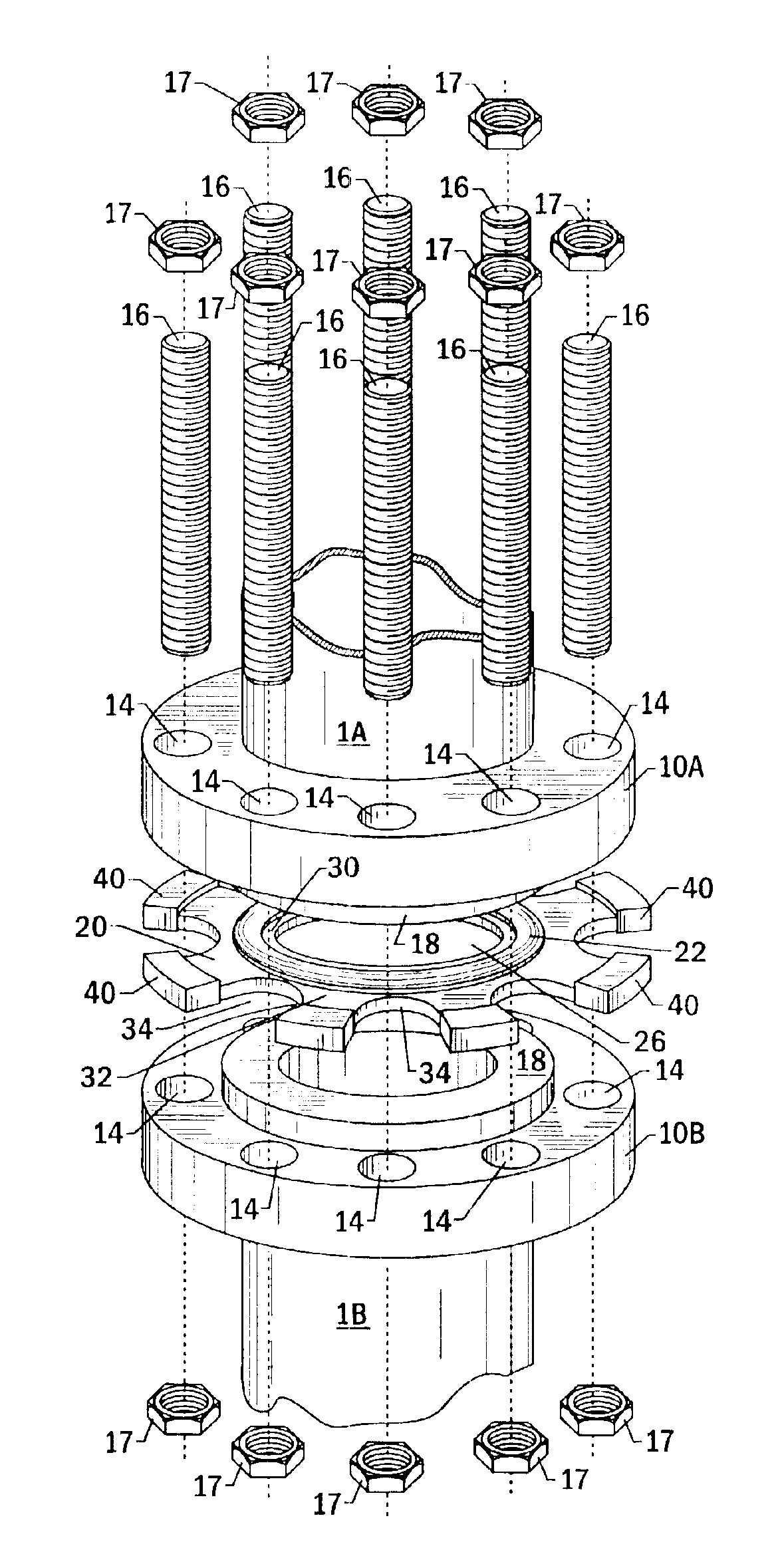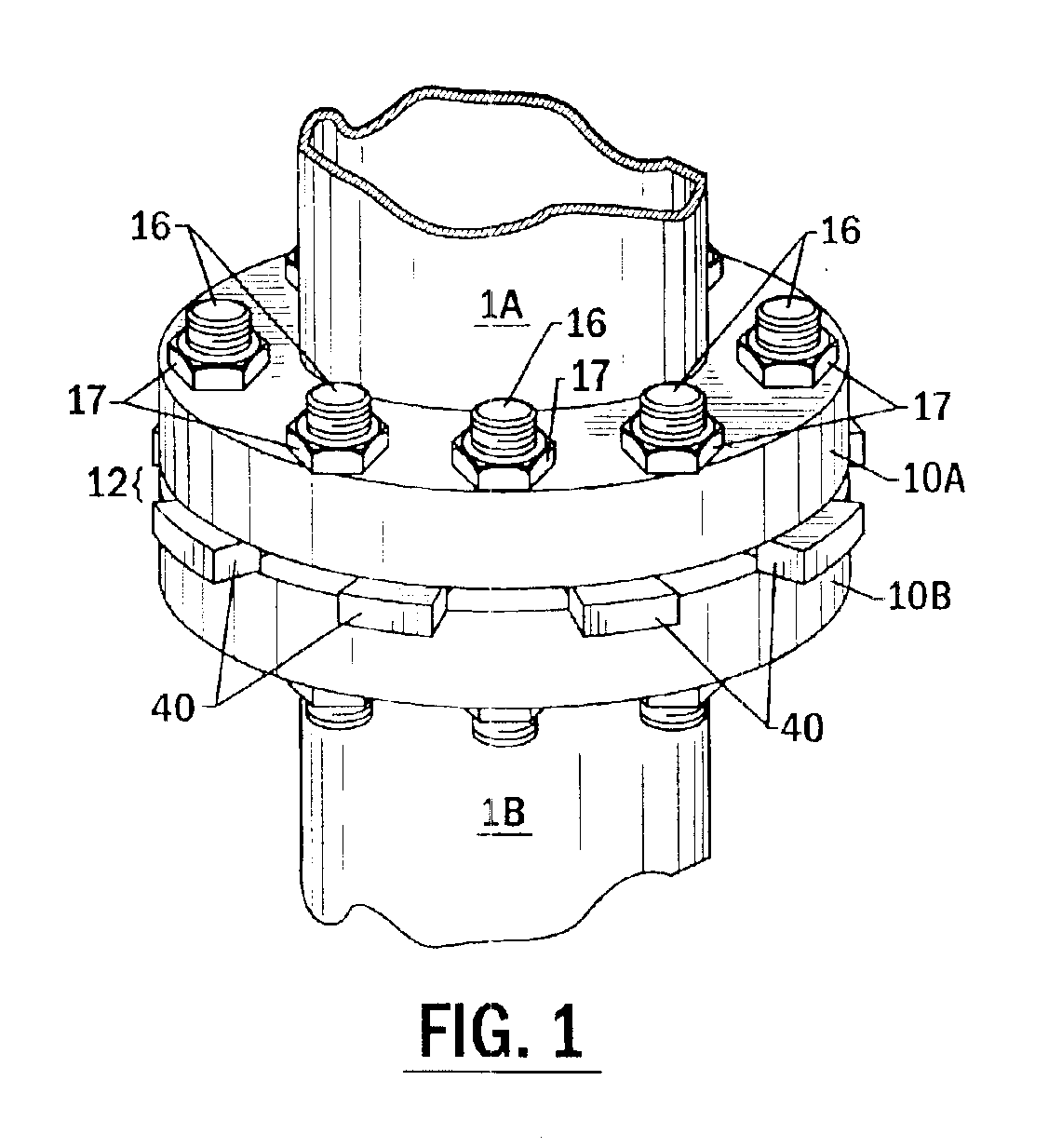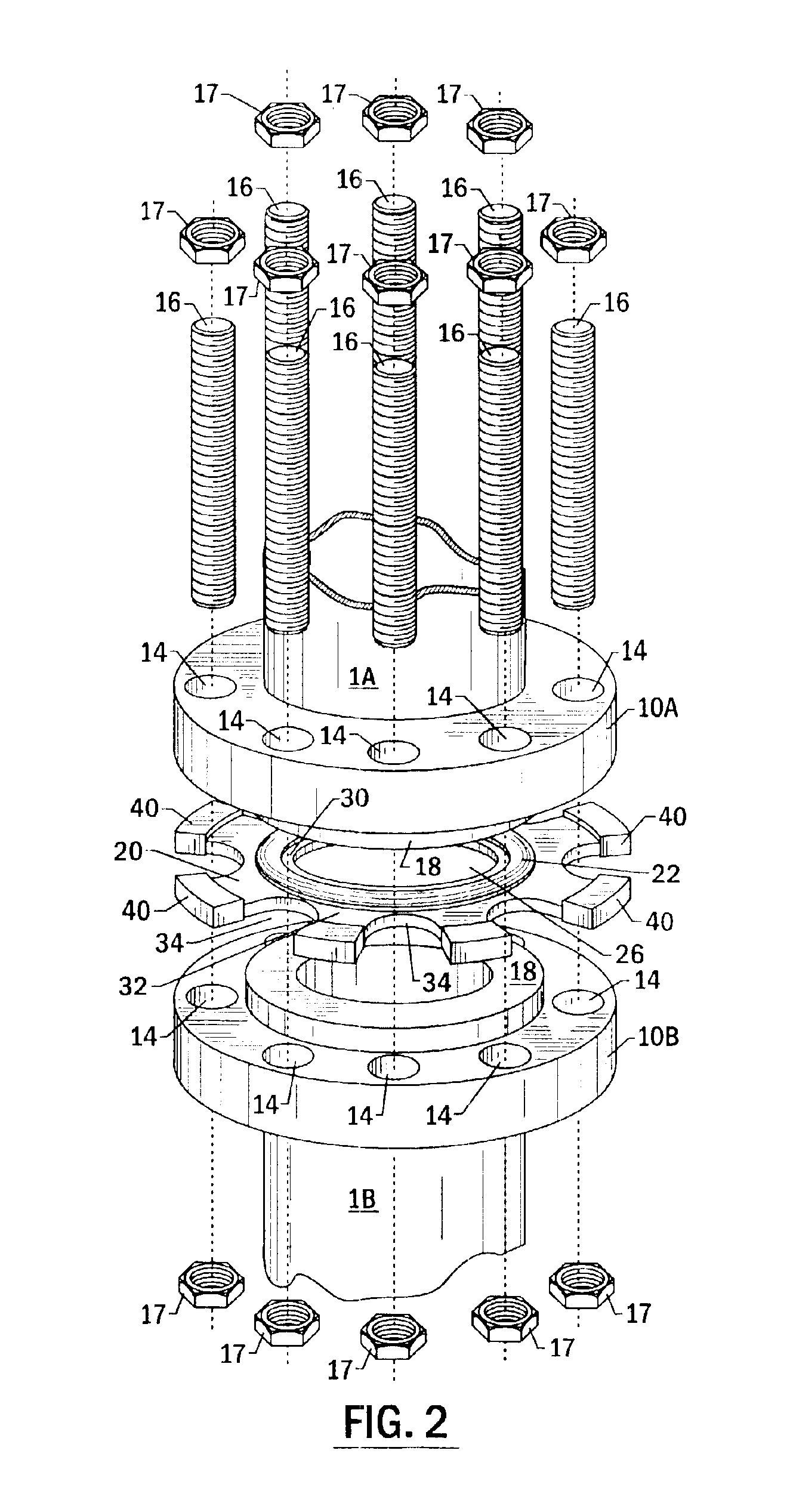Constant seating stress gasket system
a gasket system and constant seating technology, applied in the direction of couplings, cable terminations, mechanical devices, etc., can solve the problems of gasket degradation, leakage and associated seal failure, damage to sealing components, etc., to reduce the need for calibrated assembly tools, reduce the need for calibration assembly tools, and reduce the effect of material relaxation
- Summary
- Abstract
- Description
- Claims
- Application Information
AI Technical Summary
Benefits of technology
Problems solved by technology
Method used
Image
Examples
Embodiment Construction
Three aspects of gasket seating stress control the effectiveness of the seal. First, the correct target seating stress must be determined; practically, the target gasket seating stress must exceed the stress necessary to seal the maximum temperature and pressure combination of the process fluid. The calculation of this value is simple and is well within the ability of a person of ordinary skill in the art. Once the value has been calculated, the target gasket stress must be reliably achieved. Subsequently, the target gasket stress must be maintained over time.
In a preferred embodiment of the present invention, achievement of the correct gasket seating stress is accomplished by providing fixed compression stops about the inner and outer sealing surface circumferences. The compression stops are sized to withstand the flange compressive forces resulting from the assembly process for each given flange pressure class.
Referring now to FIG. 1, a preferred embodiment of a constant seating s...
PUM
 Login to View More
Login to View More Abstract
Description
Claims
Application Information
 Login to View More
Login to View More - R&D
- Intellectual Property
- Life Sciences
- Materials
- Tech Scout
- Unparalleled Data Quality
- Higher Quality Content
- 60% Fewer Hallucinations
Browse by: Latest US Patents, China's latest patents, Technical Efficacy Thesaurus, Application Domain, Technology Topic, Popular Technical Reports.
© 2025 PatSnap. All rights reserved.Legal|Privacy policy|Modern Slavery Act Transparency Statement|Sitemap|About US| Contact US: help@patsnap.com



